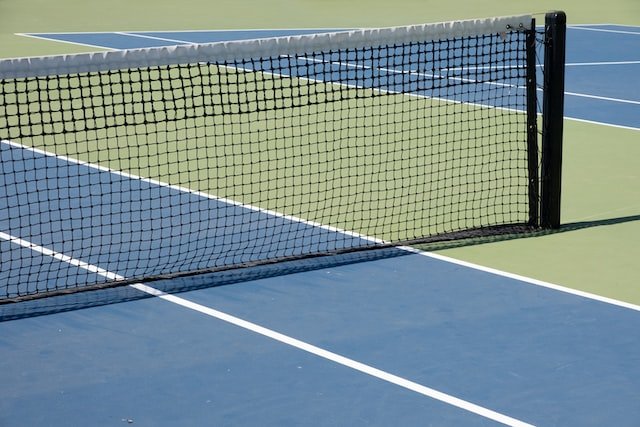What is a Walkover in Tennis?
Have you ever wondered what happens when you do not attend your tennis match? Your opponent gets a walkover.
In simple terms, a walkover is when a tennis player advances to the next round due to their opponent not showing up to the match. This could happen due for several reasons. The most commonly known are illness, injury, and code of conduct violations. It is important to note that the tennis players who do not attend their matches are withdrawn from the tournament.
To get a deeper understanding of a walkover victory, we should review some rules to get a sense of the game. In theory, it is simple, when a player does not attend a scheduled match, for whatever reason, their opponent advances to the next round as if it were an official win. However, that is not always the case seeing as the United States Tennis Association (USTA), the Association of Tennis Professionals (ATP), and the Women’s Tennis Association (WTA) have several walkover rules that are different and beneficial for you to know.

Let’s start with the basics and discuss the definition of a walkover policy in the ATP and WTA’s handbook in tennis games. The definition of a walkover would be a “match that did not begin” due to injury or illness, and the losing player was subject to penalties of the Code of Conduct before the match’s first serve was played. Let’s break it down into simpler terms and give a few examples. Starting with a walkover due to injury, we could take Rafael Nadal as an example. Before his 2022 Wimbledon grand slam semifinal match played in the United Kingdom against Nick Kyrgios, Nadal withdrew from the tournament due to an abdomen injury. This meant Kyrgios received a walkover and headed into the final directly.
When we take a closer look at this, we can see that it counts as a walkover because, as per the official rulebook, it happened before the match, granted it was last minute. Still, Nadal did not step foot on the tennis court, did not play a single point, and withdrew due to injury. Now let’s take a look at a walkover due to illness. We could take Naomi Osaka’s withdrawal from her second round in a major tournament, the Pan Pacific Open in Tokyo. Osaka stated that she suffered from abdominal pain and could not play the match. It was given on short notice considering the match to be played was the next day; however, in tennis, one cannot foresee personal reasons before matches.
As with what happened with Nadal and the game’s rules, her opponent Beatriz Haddad received a walkover because Osaka withdrew before the match was played.
Finally, let’s look at an example of a walkover due to penalties of the Code of Conduct. In 2022, the tournament official kicked Alexander Zverev out of the Mexican Open due to unsportsmanlike conduct and violent behavior after his doubles match loss.
Zverev had received a code violation at the beginning of the match due to swearing and shouting against a call the umpire had made. He then continued to strike the umpire’s chair several times. The code violation he received, along with the unsportsmanlike code of conduct violation, had a significant impact on his singles game, seeing as he was withdrawn from the tournament and his second-round opponent Peter Gojowczyk received a walkover. These examples paint a clearer picture of the exact definition of a walkover from the perspective of the ATP and WTA.
Suppose we were to look at the US Tennis Association’s handbook. In that case, we could see that their definition is “a walkover is when there has been an administrative error or when a player decides not to play a match due to injury, illness, and a personal issue.” This definition of a walkover is very similar to that of the ATP and WTA; however, the main difference here is that the USTA considers administrative errors caused by tournament organizers. This is sometimes seen at local tennis leagues, and it also considers personal circumstances that could affect a player within the tennis tournament.
Do you get points if you don’t play the match?
Seeing as you now understand the essence of what a walkover in tennis is in simple terms, you should also know that the penalty points and rules are critical. Let’s dive into the technicalities of walkovers to understand what you’re up against if you ever decide that you are unable to play a professional tennis match. One of the most controversial questions about walkovers is whether or not it is considered a match win for the player who advanced to the next round and a loss for the player who withdrew.
To put it in simple terms, as long as the match did not take place and both players did not play, it is not considered a match win or loss. However, it is worth mentioning that if you are on a winning streak and get a walkover, you do not count it as a win. It is as if the match was never even scheduled, and your streak continues from the next match.
Does not playing count as a win?
Now that we have the winning streak out of the way let’s focus on the ranking points because that is one of the most important aspects of tennis competitions. When looking at ranking points, it is essential to know that the ATP and WTA have different point systems for walkovers. For instance, the ATP states that if a player receives a walkover and advances to the next round, this player will receive the ranking points associated with that round as if the entire match had been played.
Regardless of playing the match or not, based on ATP rules, the player gets the ranking points. The scenario is different for the WTA, and it is a bit more tricky, but for the sake of simplicity, we can say this, a player who receives a walkover only gets the ranking points of that match if it is not the first match and if they have won a match in the tournament. Think of it this way, to get the ranking points of the walkover, and you have to win a match after this walkover.
Can you get an easy payday by not playing?
Aside from ranking points, a crucial part of tournaments is the prize money, where both the ATP and WTA align their policies. Both associations state that prize money will be awarded only for matches played, not for walkovers. So if in the rare occasion that a player receives a walkover in the final, both players receive the runner-up prize money seeing as the match was not played.

Does it all make sense?
Now that you read this entire article and know everything there is to know about a walkover in tennis, do you feel like you might be a little bit confused between a walkover and some other tennis terms? Let’s break it down. We now know that a walkover has to happen before the match starts and has to be due to injury, illness, and a violation of the code of conduct. Is that similar to retirement, withdrawal, or default by any chance? No, those are different terms that sometimes confuse a lot of players. Look at it this way a walkover has to happen before the match due to illness or injury.
A retirement happens during the match due to illness or injury. Let’s say you are playing the fourth round in a tournament and have just finished the first set, and you feel some pain in your shoulder. Halfway through the second set, you feel a shoulder injury coming. You can retire the match right then to prevent further damage to your shoulder. Take the 2022 French Open semi-final. Alexander Zverev rolled his ankle and injured it while playing against Rafael Nadal and had to retire based on the tournament doctor’s advice. This caused Nadal to advance to the final and it was classed as a retirement from Zverev because the match had already begun.
Adopting the same reasoning, we can look at a default compared to a walkover. As stated above, the walkover has to happen before the match due to injury, illness, or a violation of the code of conduct. On the other hand, a default can occur before or during the match and is always decided by the tournament supervisor. Look at it this way, if a player is injured, they will state that they cannot play the match and withdraw, resulting in a walkover for their opponent. In the case of a default, the umpire calls on the tournament supervisor, who then decides whether or not this player violated the code of conduct and should be defaulted.
A default could happen on the court, as stated here and seen by the most famous example of Novak Djokovic defaulting at the 2020 US Open for striking one of the line judges by accident. Tournament supervisors decided this was a code of conduct violation, and he was removed from the tournament. There are rare occasions where a player could have defaulted off the court before the match starts, but that does not happen often.
Finally, let’s look at a withdrawal compared to a walkover. They are the most similar terms because both occur due to illness, injury, or personal circumstances. However, a walkover happens before the match starts, and a withdrawal occurs before the tournament’s draw is selected. So even though they are very similar, the key difference between them is that with a walkover, the able player advances to the next round. The ill or injured player is out of the tournament, while in a withdrawal, no players go to the next phase because the sick or injured player is not considered in the tournament draw.

Final Thoughts
Taking all of this in could be hard at first, but maybe look at it this way. There are several terms in tennis that all lead to the same conclusion. A player is unable to play a specific match for whatever reason. They are all somewhat rare because players do not miss out on competitions at a professional level except for severe circumstances. Players who are ill or injured before a tournament draw tend not to play.
Suppose they decide that they are well enough to play a few matches and find that they cannot continue the tournament by the second or third round, or they violate the tennis Code of Conduct in any way before a single point of the match has been played. In that case, their opponent automatically gets a walkover and advances to the next round. If the injured or ill players decide to push themselves and try to play, but halfway through that match, they realize that they are unable to compete, they are allowed to retire mid-match.
Players get to decide how well they feel and whether or not they can play. However, if they violate the code of conduct in a way that requires tournament supervisors to intervene and they decide that they will not continue the match, these players have automatically defaulted.




Comments are closed.